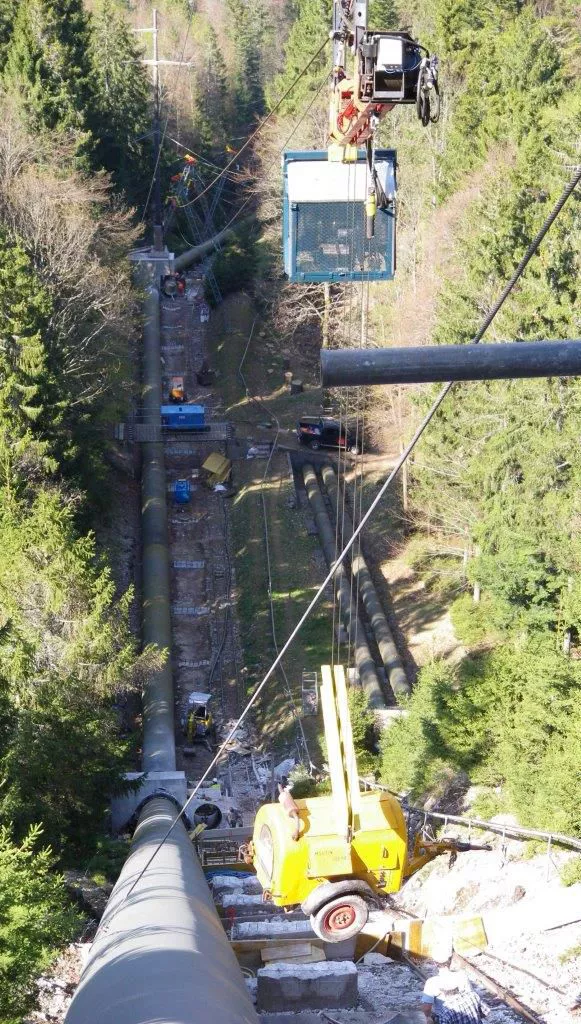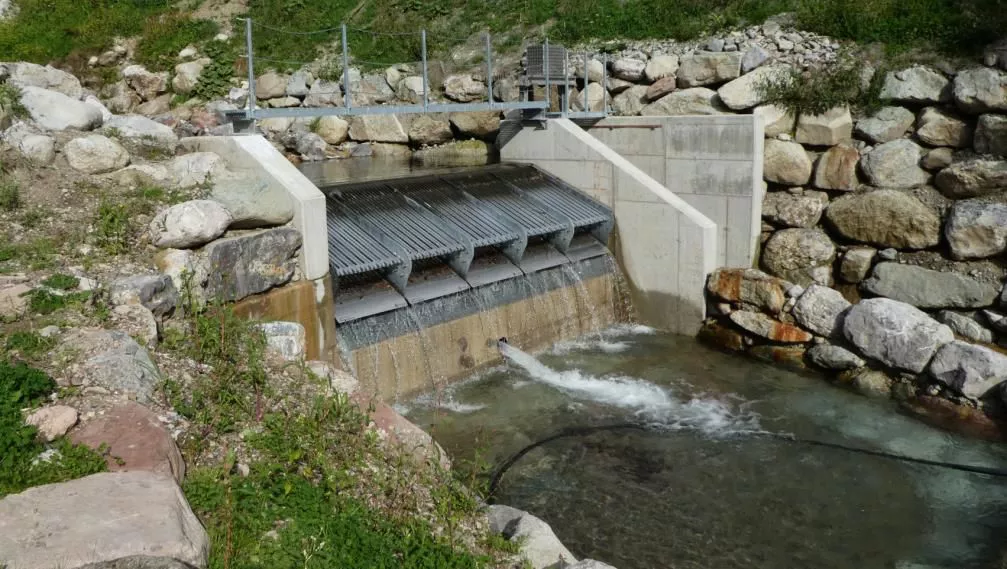Sustainably energy production
What is small-scale hydropower, mini hydro, pico hydro?
Small hydropower is a form of sustainable energy production from hydropower plants with a capacity of up to 10MW. This type of renewable energy system utilizes water pressure and natural flow to generate electrical power, without needing to construct large dams or reservoirs.
In Switzerland, according to the Swiss Federal Office of Energy, there are more than 1400 small hydropower plants with a combined installed capacity of approximately 1000MW accounting for roughly 10-15% of total electricity generation from hydropower. This percentage is even higher in some neighbouring European countries, such as Austria and France, where small hydro power plants account for up to 25% of hydropower energy production. On a global scale, small hydro systems produce an estimated 700-900 TWh of electricity annually, representing around 5-10% of the world’s sustainable energy supply.
The different types of small-scale hydro
Small hydro systems can be classified into two main categories: pico and mini. Pico systems are turbines or mills for generating electricity with a capacity of less than 1kW and have the advantage of being able to operate in remote locations with no access to the power grid. Mini hydro systems are larger plants that generate up to 10 MW of power and require more complex engineering design and planning but offer greater energy production when compared to pico systems.
Gruner provides engineering services for all phases of construction or rehabilitation of small hydro projects ranging from pico (less than 1 KW) to mini (1 MW - 10 MW).
What is low head hydropower?
Low head hydropower is a type of sustainable energy production that utilizes water pressure and flow from low-head sources such as streams or natural waterfalls. Low head systems are designed to generate electricity with minimal disruption to the surrounding environment, making them ideal for sustainable energy development in remote areas. Typical low-head installations include old mills with waterwheels or with turbines installed that are adapted for the low-head and flow conditions.

What is high-head hydropower?
High-head hydropower utilizes water pressure and flow from high-head sources which is defined as over 100 metres in head (or hydrostatic pressure head to give its full name) Typical high head installations include large dams or reservoirs. High head systems are designed to generate significant amounts of electricity but require more complex engineering planning in order to ensure the safety of the environment and surrounding communities. Gruner Engineering has extensive experience in developing high head hydropower projects with sustainable design solutions.
High-head hydro uses high pressure and flow to generate electrical power, often requiring the construction of dams or reservoirs. Gruner Engineering has expertise in developing high head hydro projects with sustainable engineering solutions that meet the needs of local communities while reducing environmental impacts.
What are the typical components of a small hydropower plant?
Small hydropower plants typically consist of intake structure, a water conveyance structure leading to a powerhouse containing a turbine, generator, control systems, and electrical take-off equipment such as transformer, substation and power lines. Turbines are responsible for converting the energy from water pressure into mechanical energy which is then used to generate electricity. Generators convert this mechanical energy into electrical energy and control systems ensure that the system operates safely and efficiently. Penstock pipes, pressure tunnels or intake canals are used to carry water from the source to the turbine and power lines are responsible for transferring generated electricity from the plant to its end users.
What are the different types of turbines typically used in small hydropower systems?
The most common types of turbines used in small hydropower systems are also the most common turbines types generally that is to say Francis, Kaplan and Pelton turbines. Francis turbines are the most commonly used type and use a radial-flow design which is efficient. Kaplan turbines are a variant of the Francis turbine with variable blade angles for improved efficiency of low head sources such as streams or natural waterfalls. Pelton turbines use a high-pressure jet to spin their blades, making them ideal for high head sources such as large dams or reservoirs, but require more precise engineering design to prevent damage from cavitation. Gruner has extensive experience in developing the optimal turbine design for any given application.
What are the benefits of small hydro power plants?
Small hydropower offers a number of benefits, such as reduced land disruption, improved water quality, increased biodiversity conservation, and reduced greenhouse gas emissions especially when it comes to increasing the output through the upgrade, rehabilitation and renovation of existing run-of-river powerplants which is more common now in developed countries. With respect to greenfield sites, these systems can provide reliable electricity in remote areas with no access to the power grid and have been proven to be cost-effective investments.
What are the disadvantages of small hydro power plants?
Like the development of large hydropower, the development of small hydropower should be rigorously licensed and controlled as per sustainable hydropower design. Balanced mitigation measures should be included in the design of each hydriopower scheme which could include measures such as fish passes and requirements for minimum environmental flows in the river and streams concerned. In general watersheds and water resources should be the subject of strategic masterplans, living documents which identify the benefits and impacts of each construction on that water basin. This can then support the decision makers involved to implement a balanced solution comparing the requirement for energy with the environmental and social impact of the construction. The resulting design should be a sustainable development as per the Brundtland report definition.
Why choose Gruner for small hydropower engineering services?
Gruner provides a full range of services for small hydropower (SHP) schemes, including project feasibility studies, detailed engineering designs, construction management, commissioning and operation & maintenance support. Our engineers and experts have been involved in numerous small hydro projects around the world and have gained a reputation for providing innovative and sustainable designs. We can support our clients to identify suitable sites for energy production and develop sustainable hydropower projects. Our experienced hydraulic engineers offer innovative designs for sustainable energy production that maximize environmental benefits while minimizing disruption to the surrounding environment. Gruner is committed to providing reliable and cost-effective solutions for sustainable energy development.


